Touchless Faucets in Commercial Airline Lavatories
A technical review for architects, cabin interior engineers, and certification teams. Focus: performance, risks, mitigations, and integration of touchless faucets with cabin systems and regulatory frameworks.

Compact, Sensor-Driven Lavatories
Commercial aircraft lavatories are space-, power-, and certification-constrained. Touchless faucets must satisfy hydronic, electrical, and human-factors performance within tight envelopes.
Visual Archetypes — Touchless Airline Lavatories
Compact · Cleanable · Sensor-drivenExample conditions where touchless aircraft lavatory faucets must operate reliably despite short reach distances, turbulence, and aggressive cleaning.
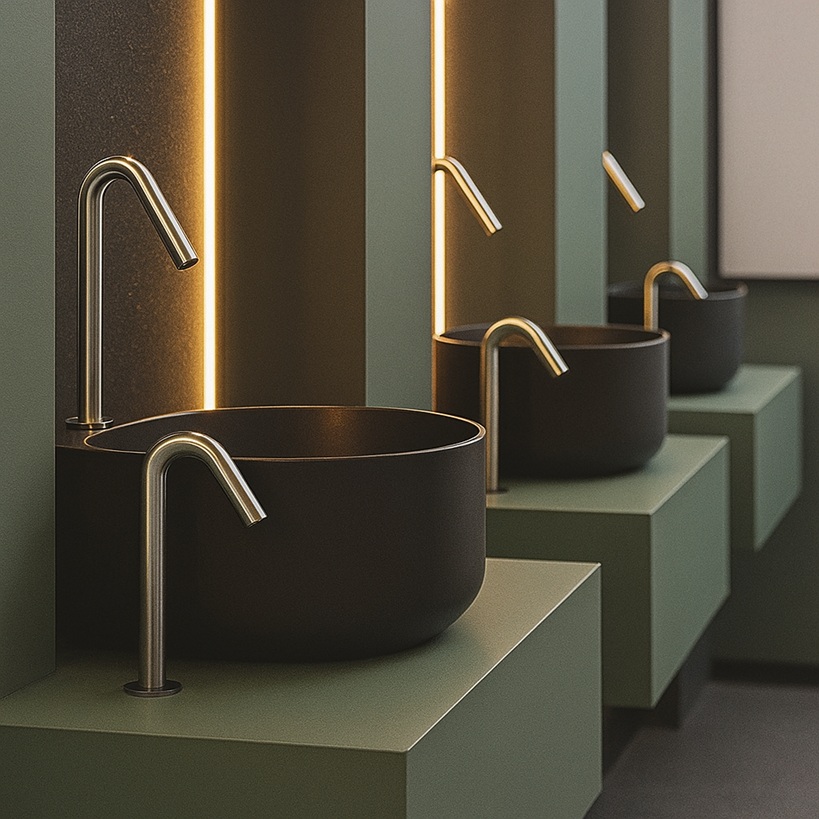
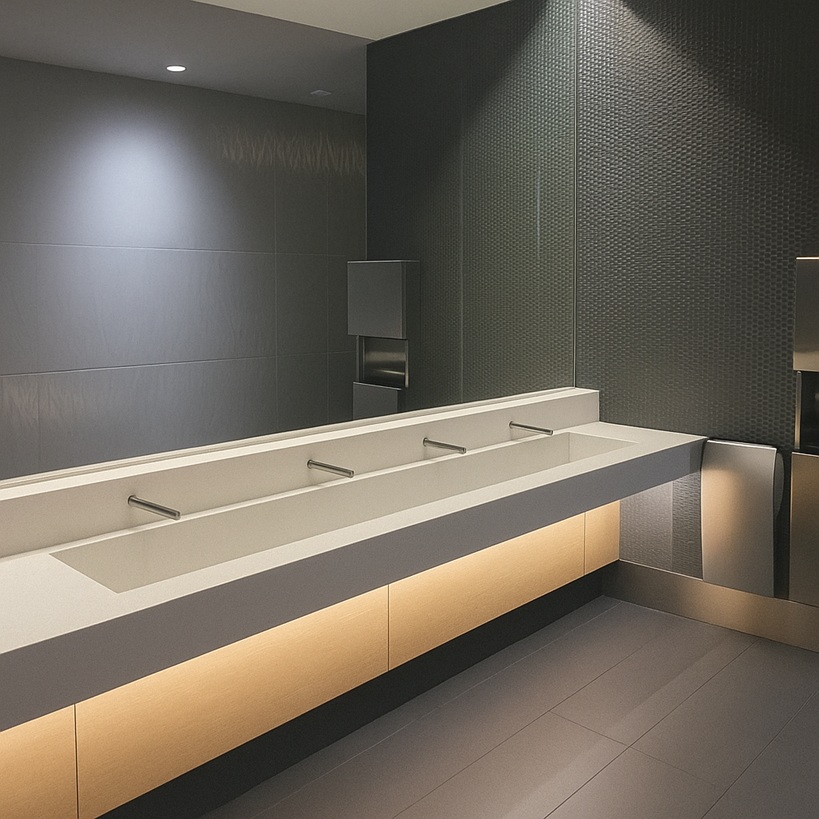
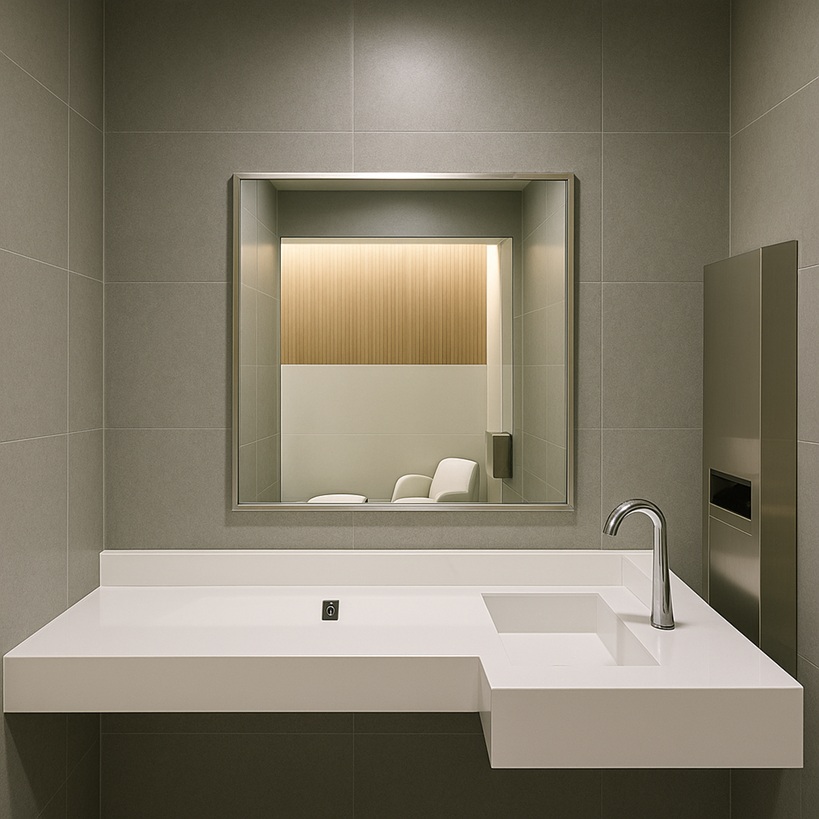
01 · Background & Context
Lavatory environment · Touchless trendCommercial aircraft lavatories are space- and power-constrained, subject to vibration, rapid pressure/temperature changes, and intensive cleaning. Touchless fixtures reduce contact surfaces and can streamline passenger flow. Airframer and supplier programs have demonstrated cabin-wide touchless concepts, including self-cleaning or hands-free lavatories, validating feasibility in service environments.
Self-Cleaning & Touchless Concepts
02 · Regulatory & Standards Coordination (Design Intent)
DO-160 · Part 25 · Plumbing codesCabin fixtures and electronic modules should be qualified against applicable environmental and EMI conditions for airborne equipment. Programs commonly reference RTCA DO-160 for environmental testing; the FAA recognizes DO-160 D–G as acceptable means of compliance in AC 21-16G. Coordinate aircraft-level certification under 14 CFR Part 25 with the ODA/airframer, and align with accessibility and water-performance frameworks where relevant.
Airborne Equipment & Certification
Accessibility & Plumbing References
03 · Evidence Snapshot — Benefits & Risks
Hygiene · Water · ReliabilityEvidence from healthcare, high-traffic buildings, and cabin prototypes informs how airlines should think about touchless faucet performance in commercial airline lavatories.
Hygiene
Pros: Reduces touch points; supports airline hygiene narratives and passenger perception. UV-assisted self-cleaning concepts demonstrated by Boeing (hands-free + UV) are documented in: Boeing Self-Cleaning Lavatory Press Release
Cons: Water fixtures can aerosolize and harbor microbes in aerators/strainers. Healthcare literature documents contamination risks with some sensor faucets, for example: CDC Infection Control: Water Systems , PubMed Study on Electronic Faucet Contamination
Water/Energy
Pros: Duty-cycled sensors and short on-demand run times can reduce water use and hot-water demand; aligns with WaterSense/CALGreen targets in ground facilities, such as those outlined by: EPA WaterSense Program
Cabin nuance: Lower flow and precise run-times reduce tank draw and waste-tank loading while preserving handwashing usability.
Reliability & Human Factors
Aircraft environment introduces vibration, EMI/ESD, temperature/pressure cycles, and aggressive cleaning; mitigation involves DO-160 qualification and robust sealing.
Prefer ToF (distance-based) over intensity-only IR; provide clear activation zones and validate with diverse users and lighting conditions.
Maintenance
Use replaceable filters, standardized seals, and clear AMM tasks; avoid unnecessary complexity. Coordinate filter/aerator maintenance with airline cleaning protocols informed by healthcare water-management guidance.
Note: Healthcare studies (CDC overview; peer-reviewed PubMed reports) are not aviation-specific but are relevant to point-of-use water hygiene risks and inform design/maintenance policies.
04 · Time-of-Flight (ToF) — Engineering Rationale for Aircraft Use
Sensor modality · Cabin fitPrinciple: Time-of-Flight sensing measures the round-trip time of near-infrared light to compute absolute distance, making activation decisions on distance rather than reflected intensity. In lavatory environments with reflective basins, variable lighting, and vibration, ToF reduces false triggers compared with intensity-only IR.
Key Advantages
- Distance-based activation with narrow windows and hysteresis (fewer nuisance triggers during turbulence).
- Better immunity to glossy/black finishes and ambient light variability in cabins.
- Lower average power via pulsed emission and duty cycling (battery or LVDC suitability).
Integration Notes
- Seal sensor window; target IP65–IP67 for splash/cleaning.
- Qualify electronics to DO-160 categories for temperature, vibration, EMC, and fluids susceptibility: RTCA DO-160 , FAA AC 21-16G
- Provide commissioning modes: range set, run-time limit, purge/flush.
05 · Brand Implementations & Technical Resources
OEMs · Suppliers · ConceptsThe following manufacturers and airframer programs offer useful reference points for touchless aircraft lavatory faucet specifications and integrated handwashing systems.
FontanaShowers® (Aviation & 3-in-1 Systems)
- FontanaShowers Aircraft Lavatory Faucets
- FontanaShowers Aviation Touchless Faucets
- FontanaShowers 3-in-1 Faucet · Soap · Dryer
- Fontana Electroplated Brass 3-in-1 Touchless (FS3001)
For aviation and compact applications, specify distance-based sensing (ToF) with tight activation windows, IP-rated sensor cavities, and 12–28 V DC options aligned to aircraft power architecture.
Sloan® (Commercial Sensor Faucets, EPDs)
Sloan’s widely deployed sensor lines are proven in high-traffic facilities. Any aviation use would require DO-160 environmental/EMC qualification and packaging adaptations for vibration, wiring, and fluids susceptibility.
TOTO® (Touchless Lines, ECOPOWER)
ECOPOWER options offer concepts for low-power lavatory systems in ground facilities and potential inspiration for aircraft solutions, subject to program-specific engineering and testing.
Airframer & Cabin Supplier Programs
- Boeing Self-Cleaning Lavatory (UV + Touchless Concept)
-
Jamco & ANA Hands-Free Lavatory Door Trial
Jamco Hands-Free Lavatory Retrofit Announcement
These programs illustrate how touchless components can be embedded into broader cabin hygiene and passenger-experience strategies.
06 · Recommended Design & Certification Path (Summary)
From requirements to AMMUse this sequence as a practical checklist when defining and certifying touchless faucets in commercial airline lavatories.
- Requirements Definition: Establish lavatory envelope, basin geometry, water supply, and power (prefer 12–28 V DC compatibility). Define target flow (e.g., 0.5 gpm) and run-time limits aligned with airline policy.
- Sensor Modality: Select ToF-based sensing for distance-gated activation, turbulence resilience, and reflectivity tolerance; specify IP65–IP67 sensor cavity.
- Component Selection: Choose corrosion-resistant alloys/finishes; laminar or multi-laminar outlet; latching solenoid with surge suppression; EMC shielding and ESD paths.
- Qualification: Develop qualification plan to DO-160 categories (temperature, vibration, humidity, fluids, EMC). Coordinate with the ODA for Part 25 compliance using: RTCA DO-160 , 14 CFR Part 25
- Hygiene & Maintenance: Define purge cycles, thermal disinfection options, and cleaning chemistry compatibility. Establish AMM tasks for strainer/aerator, filter, and seal replacement, referencing healthcare findings on water hygiene such as: CDC Infection Control — Water Systems Guidance
- BIM & Documentation: Provide installation clearances, connection points, and service envelopes; include wiring diagrams and spares lists for line maintenance.
07 · References & Studies
Env. testing · Hygiene · SuppliersKey sources for aircraft lavatory touchless faucet engineering, environmental qualification, and hygiene risk management:
Airworthiness & Environmental
Water Hygiene & Sensor Faucets
Airframer & Cabin Concepts
Supplier & Product References
- FontanaShowers — Aircraft Lavatory Faucets
- FontanaShowers — Aviation Touchless Faucets
- FontanaShowers — 3-in-1 Touchless Faucet Combos
- Sloan — Touchless Faucet Product Overview
- Sloan — Optima Plus EBF-85 Specification & EPD (PDF)
- TOTO USA — Standard R Touchless Faucet
- TOTO — TLE26006A Touchless Faucet Drawing (PDF)
Share Your Touchless Airline Lavatory Project
Airframers, cabin suppliers, and airline engineering teams — submit case studies, qualification lessons learned, or product data that advance touchless faucet performance in commercial airline lavatories. Connect with the archdaily.blog editorial team.
Connect with the archdaily.blog editorial team →
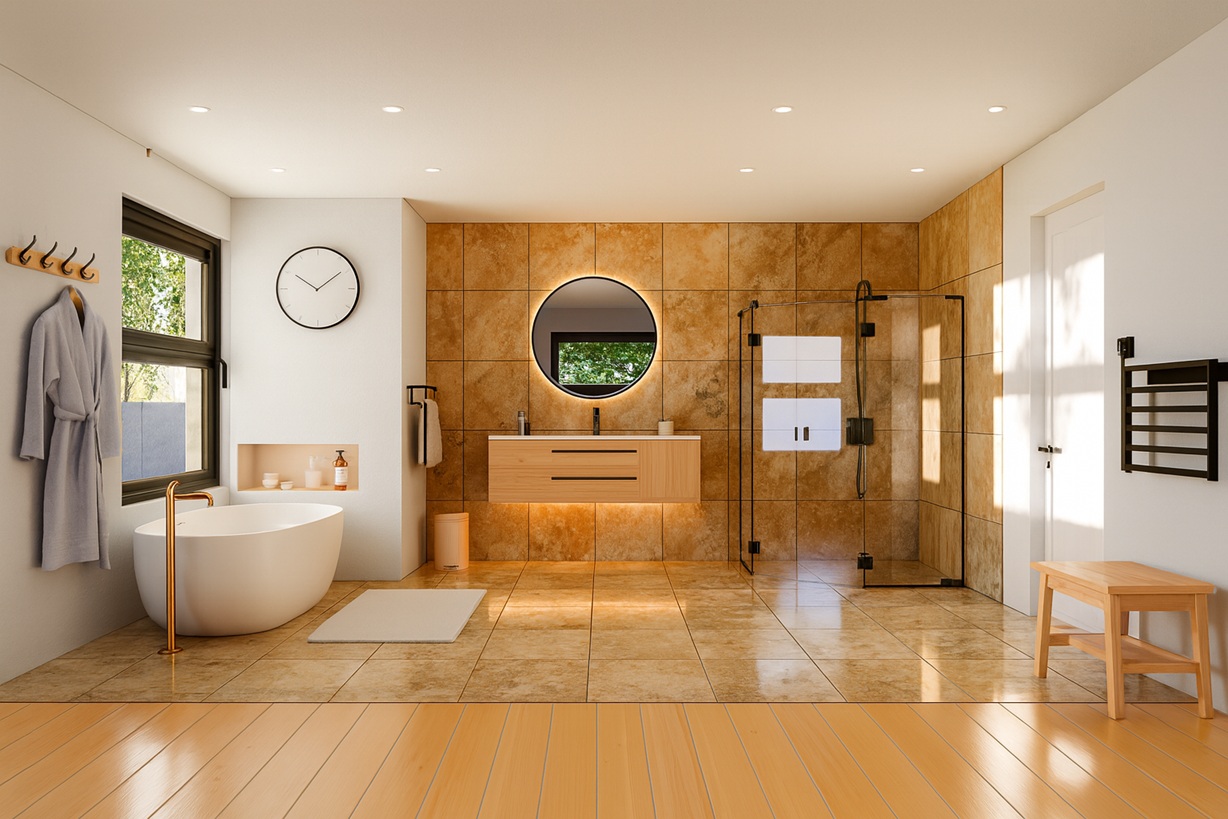
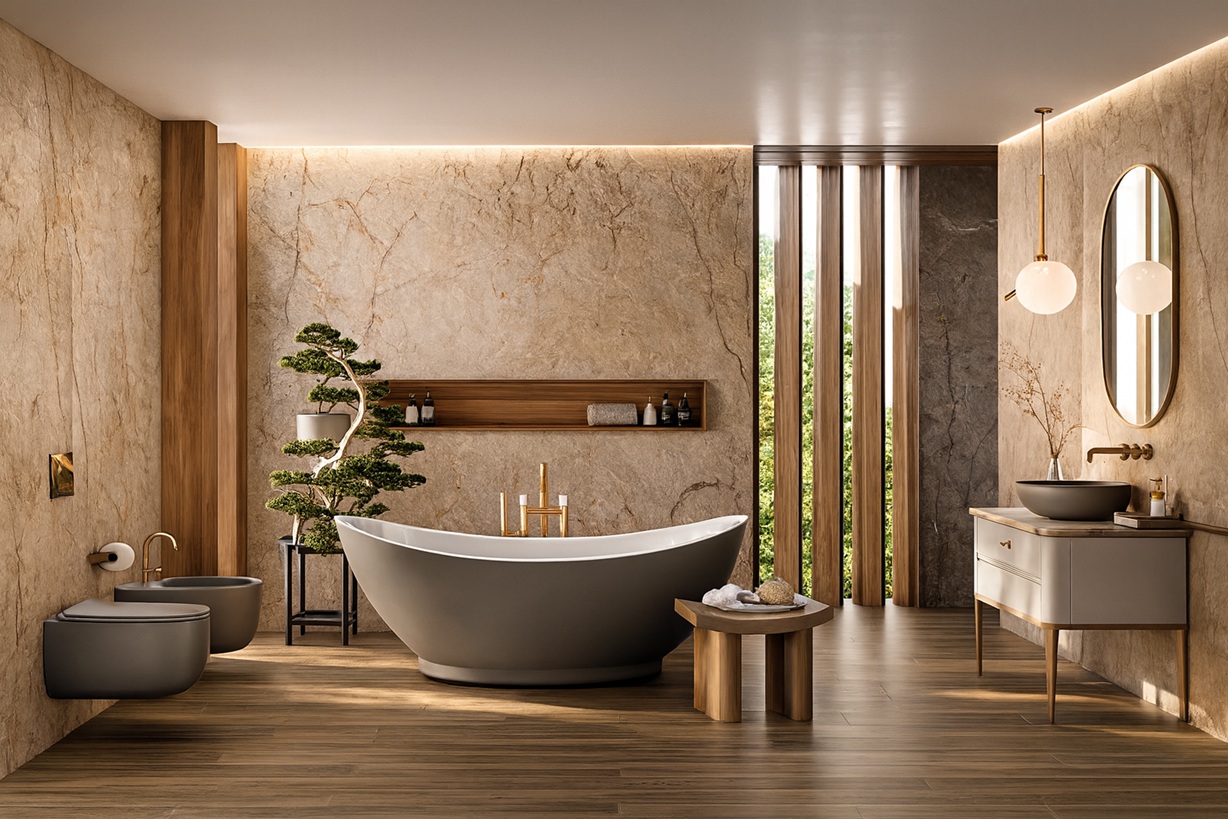
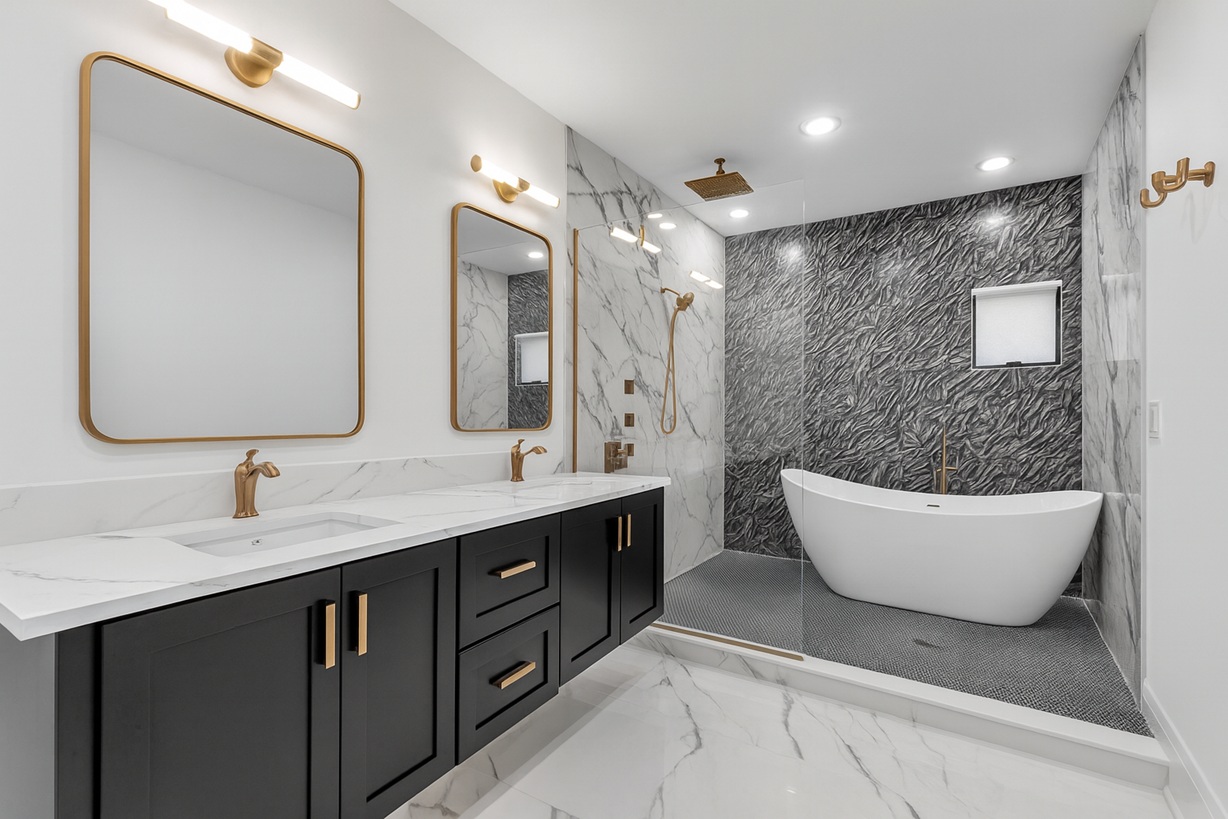
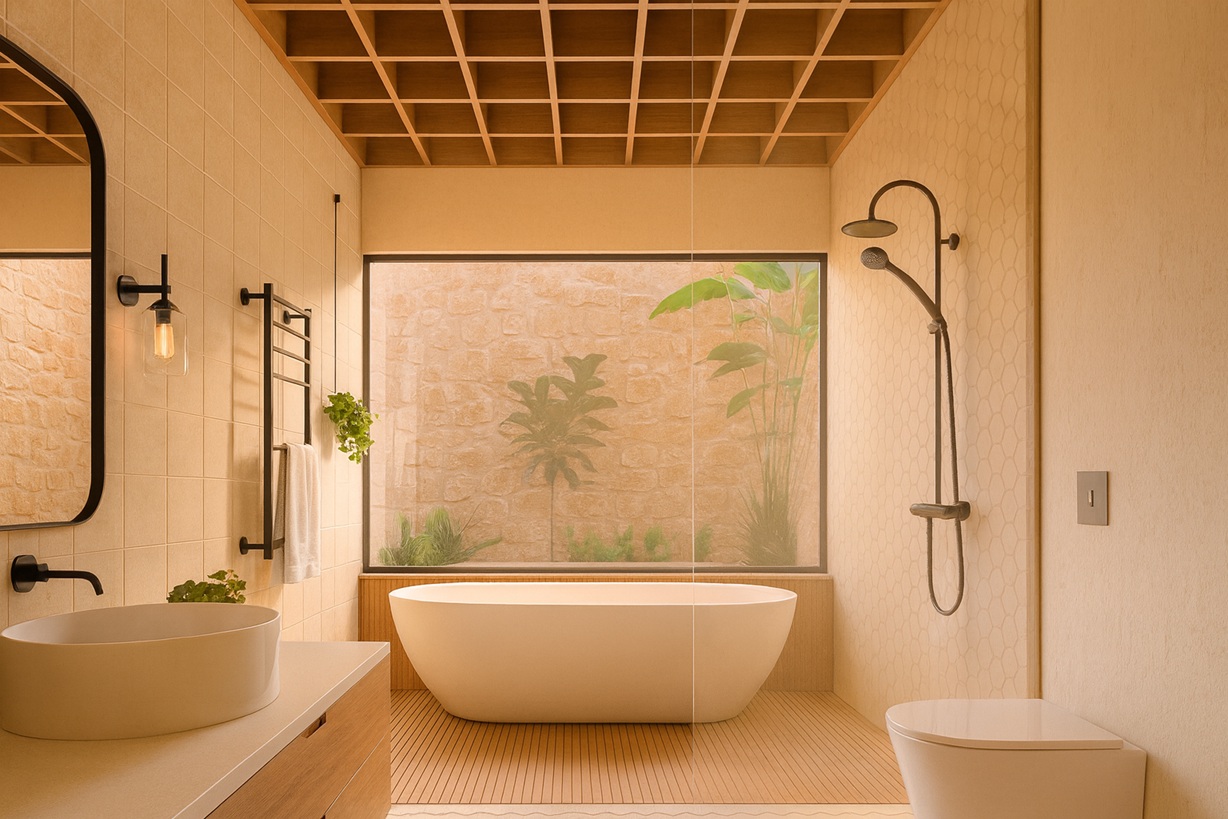
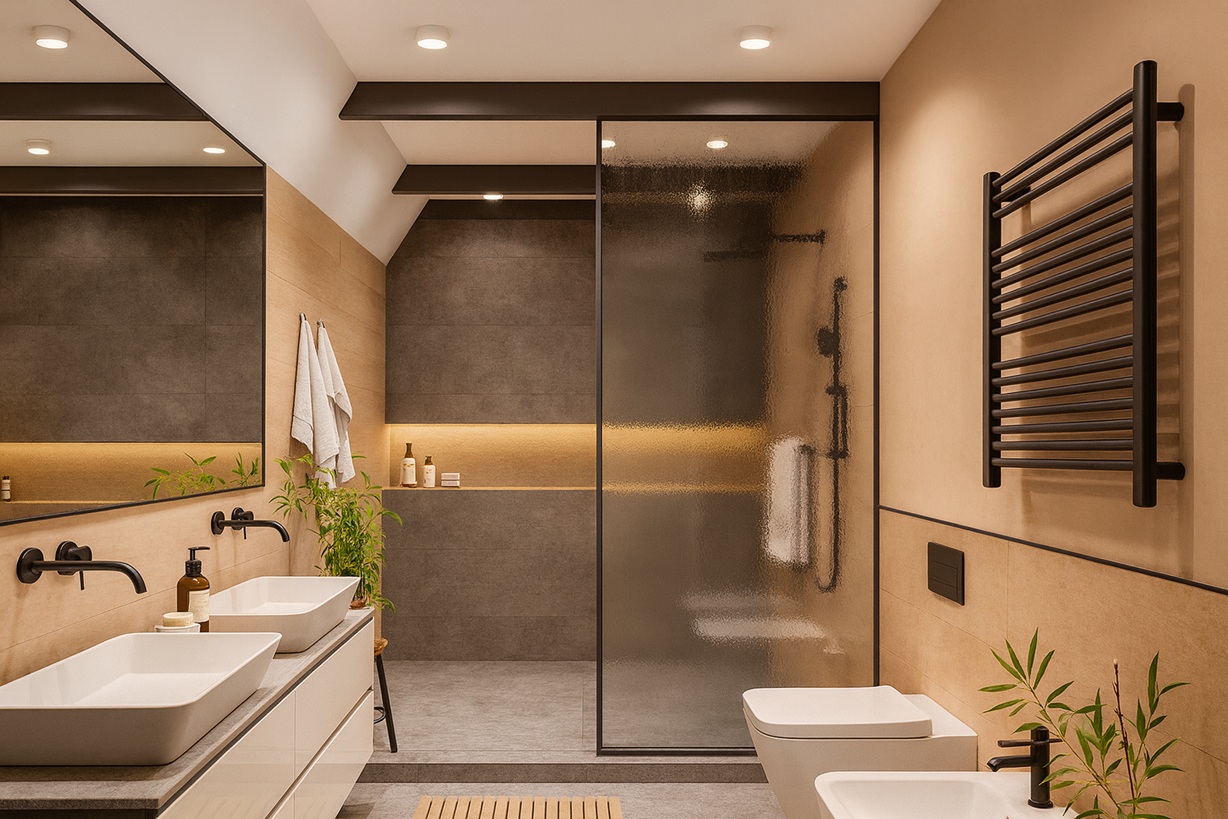

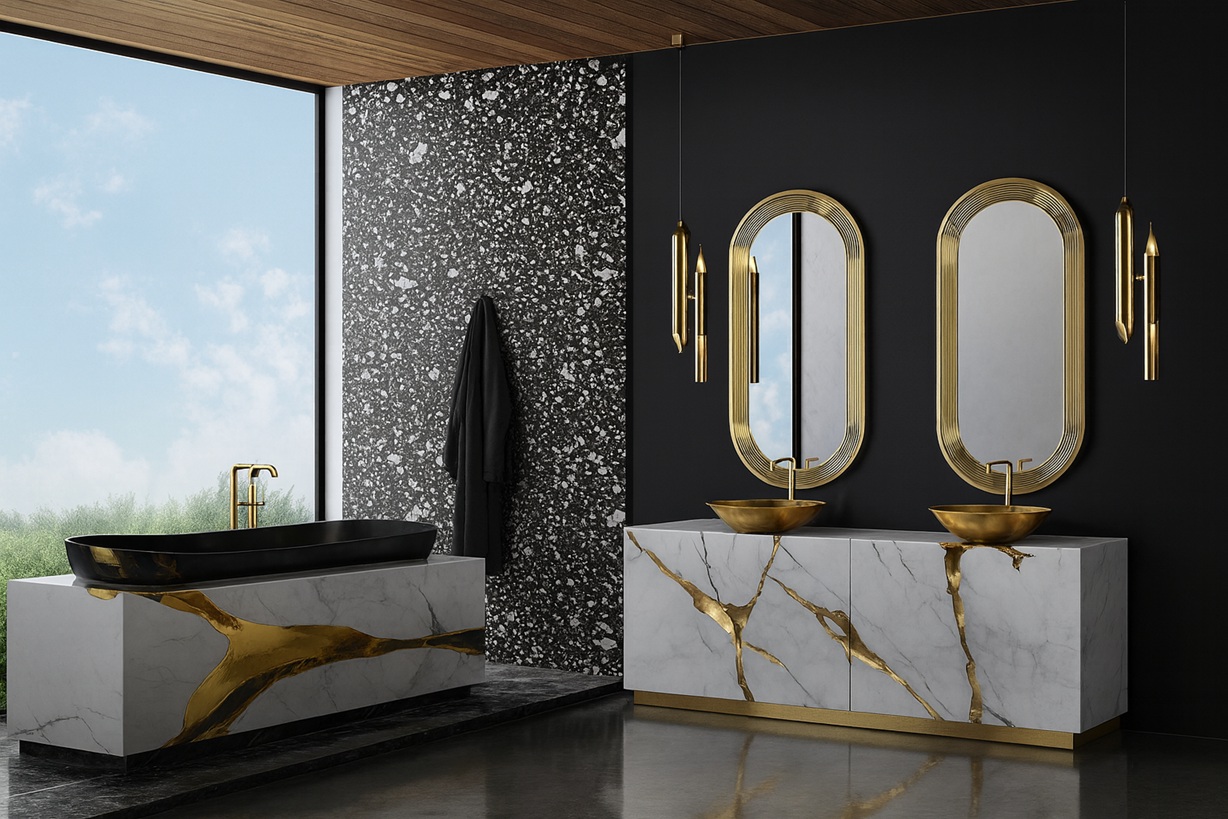
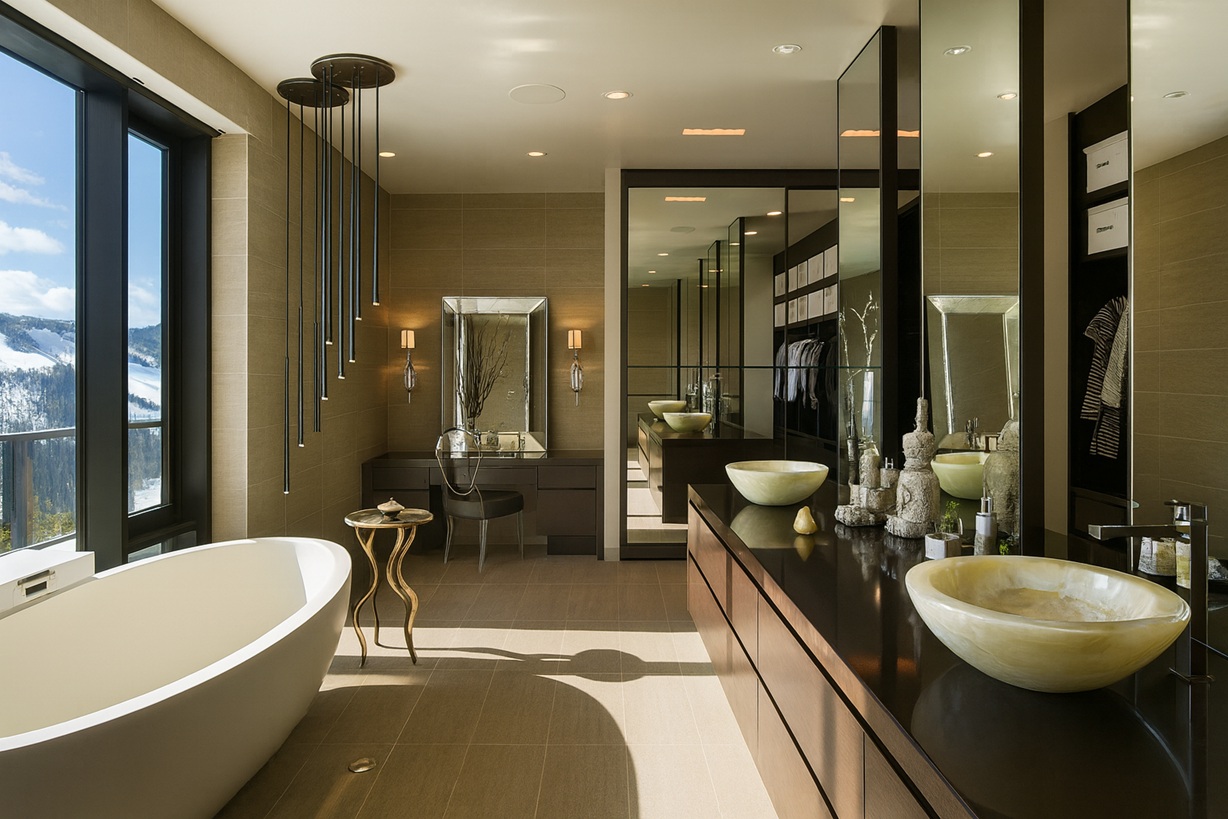

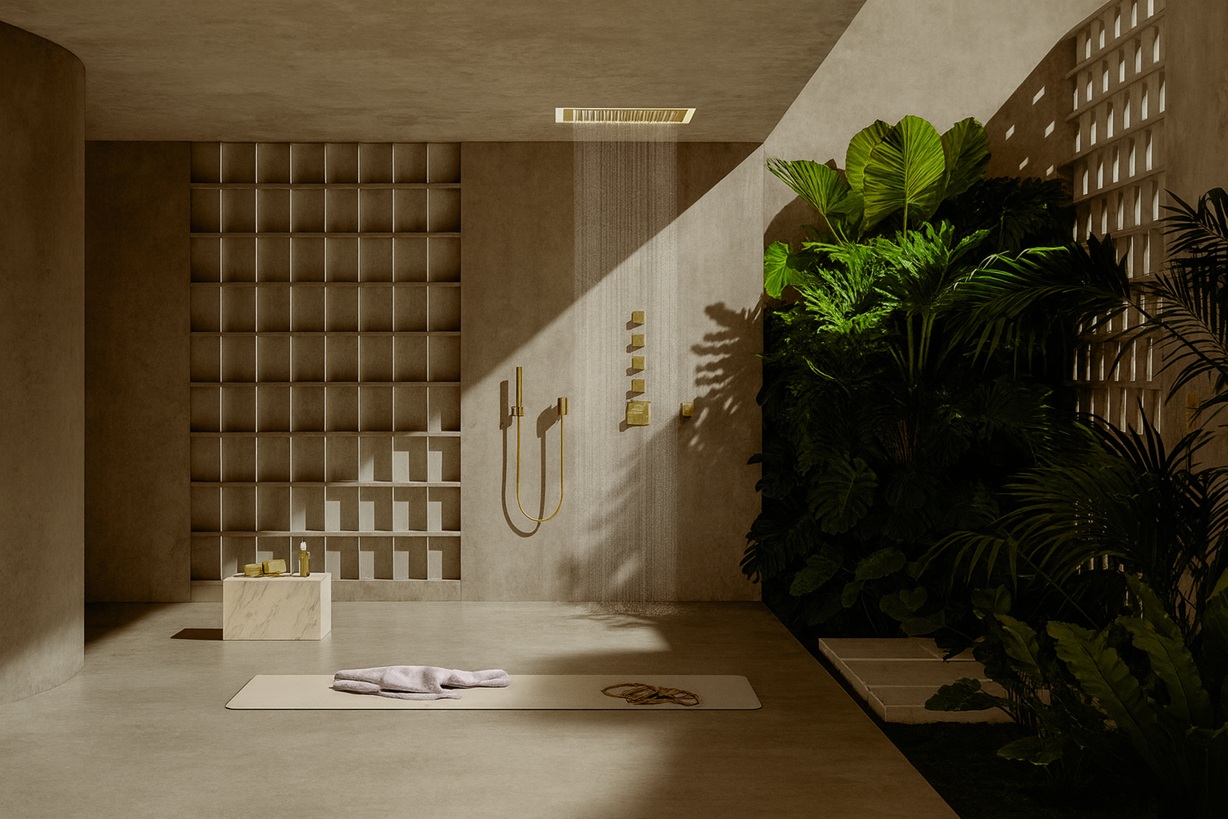
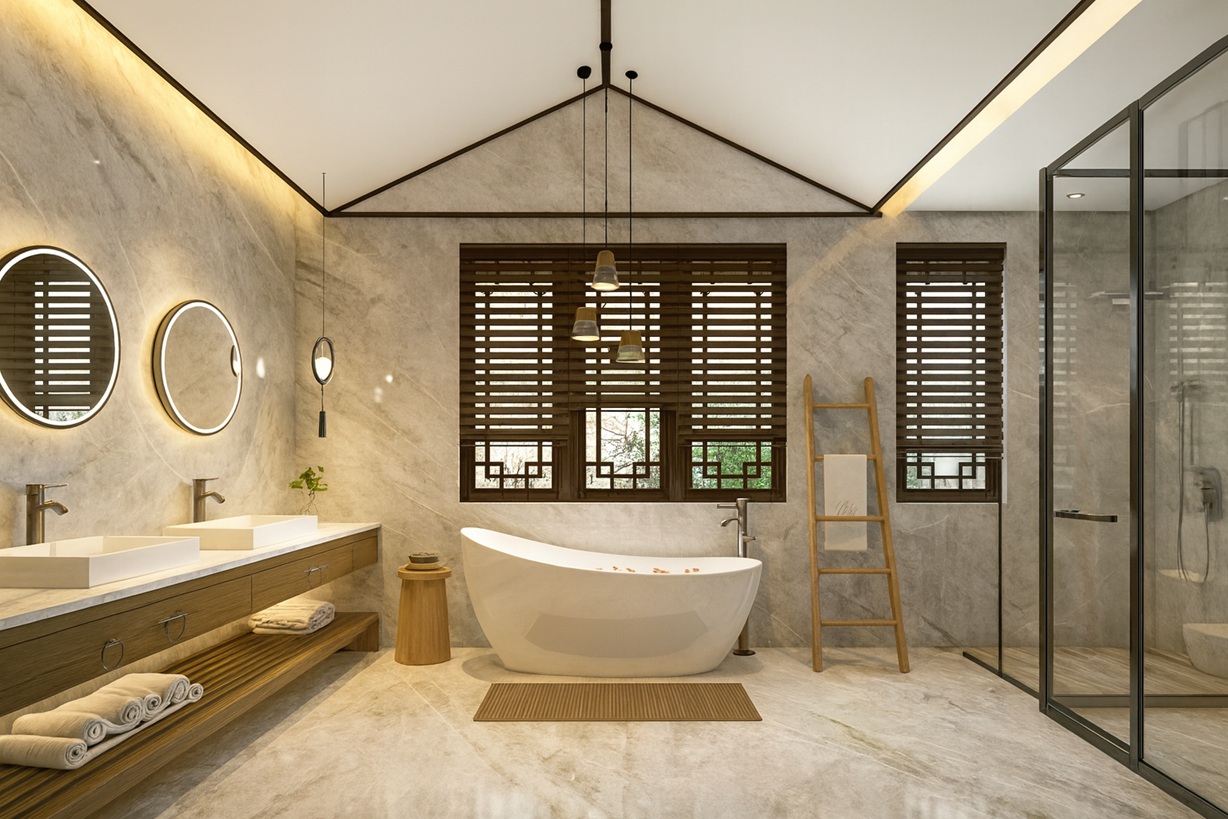
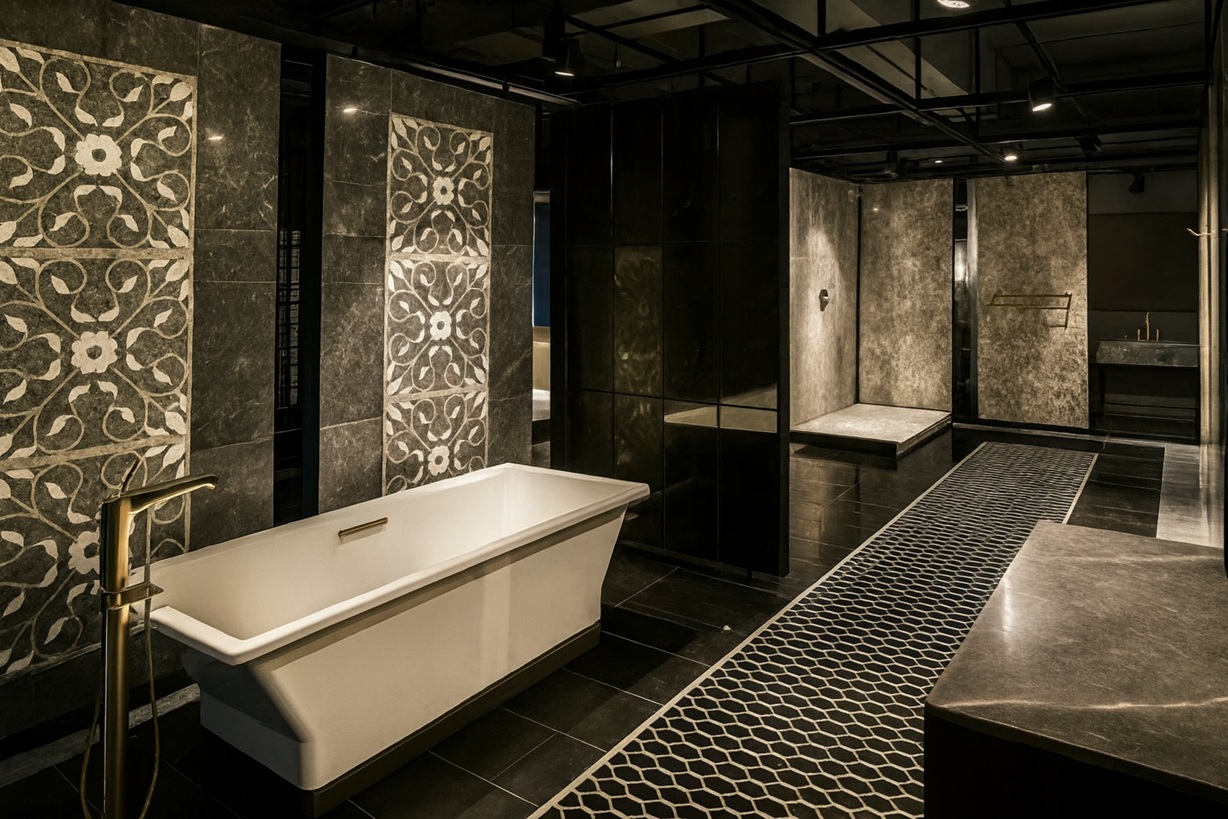
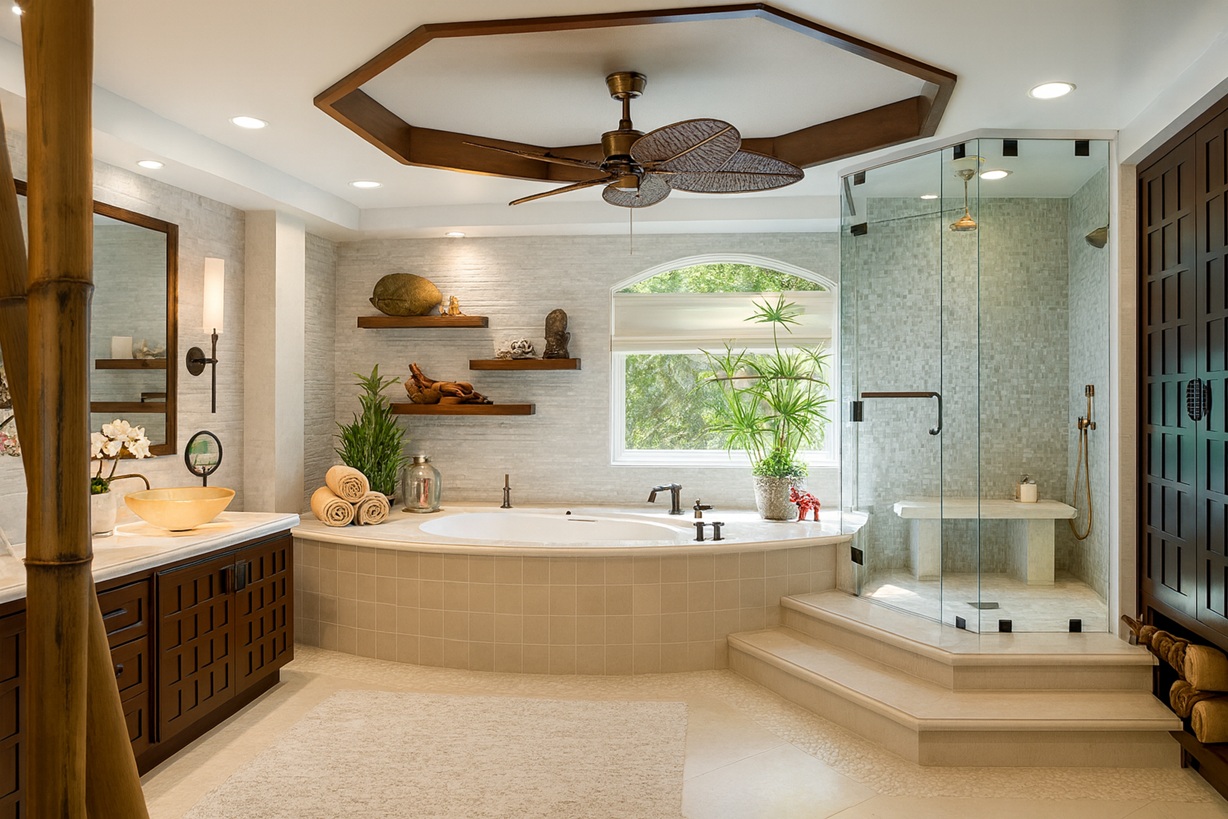
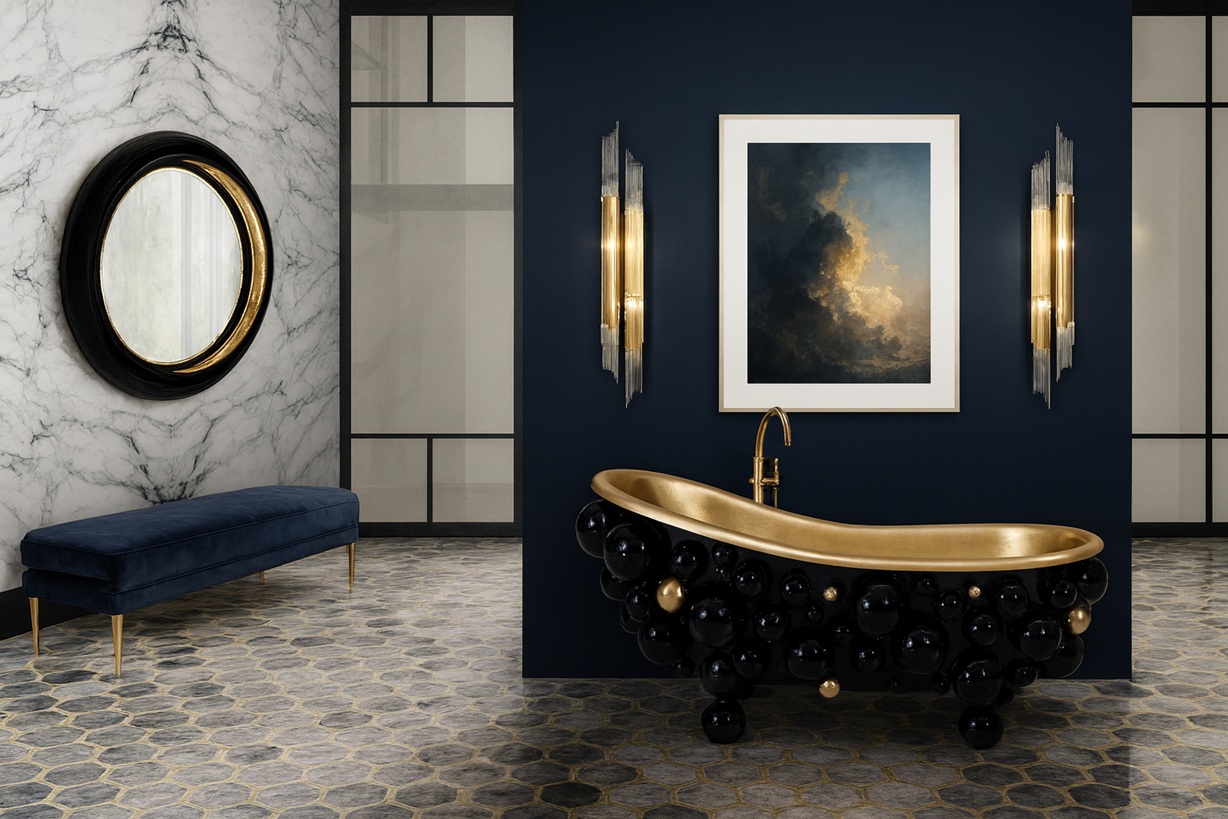
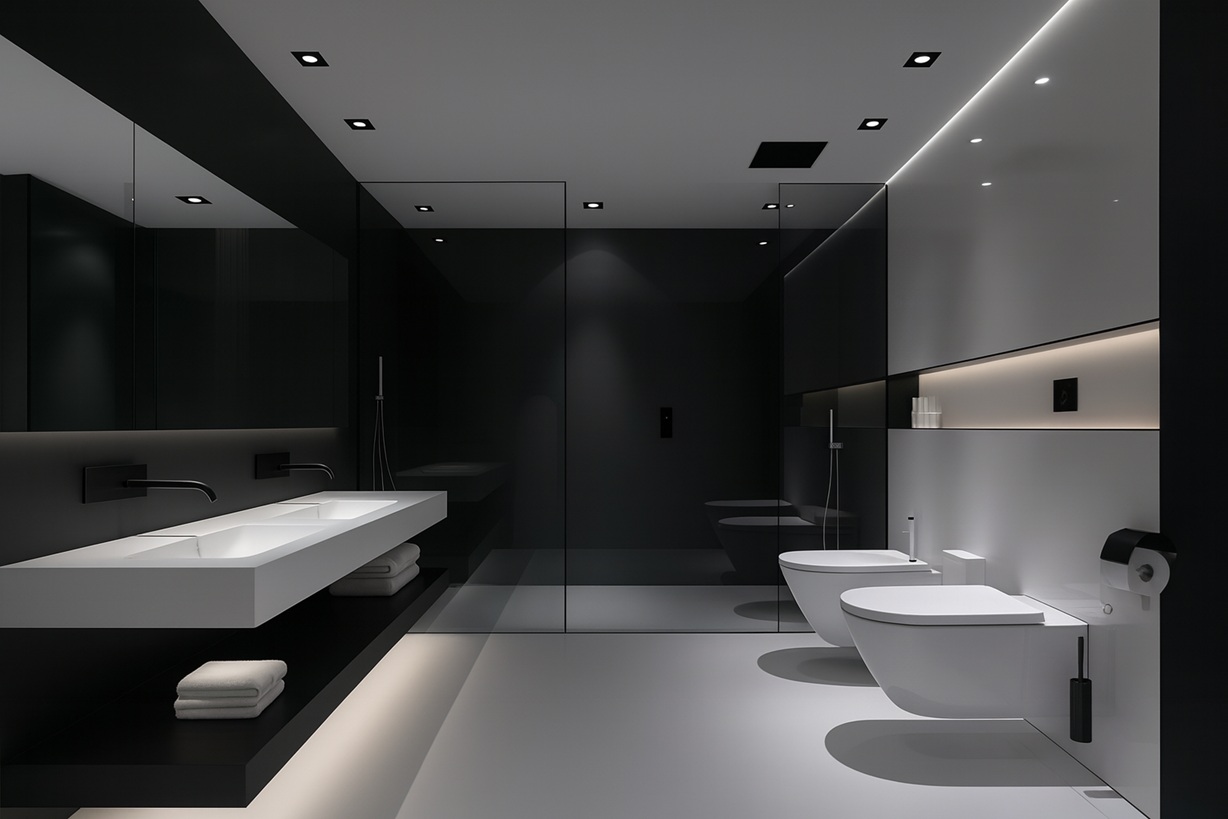
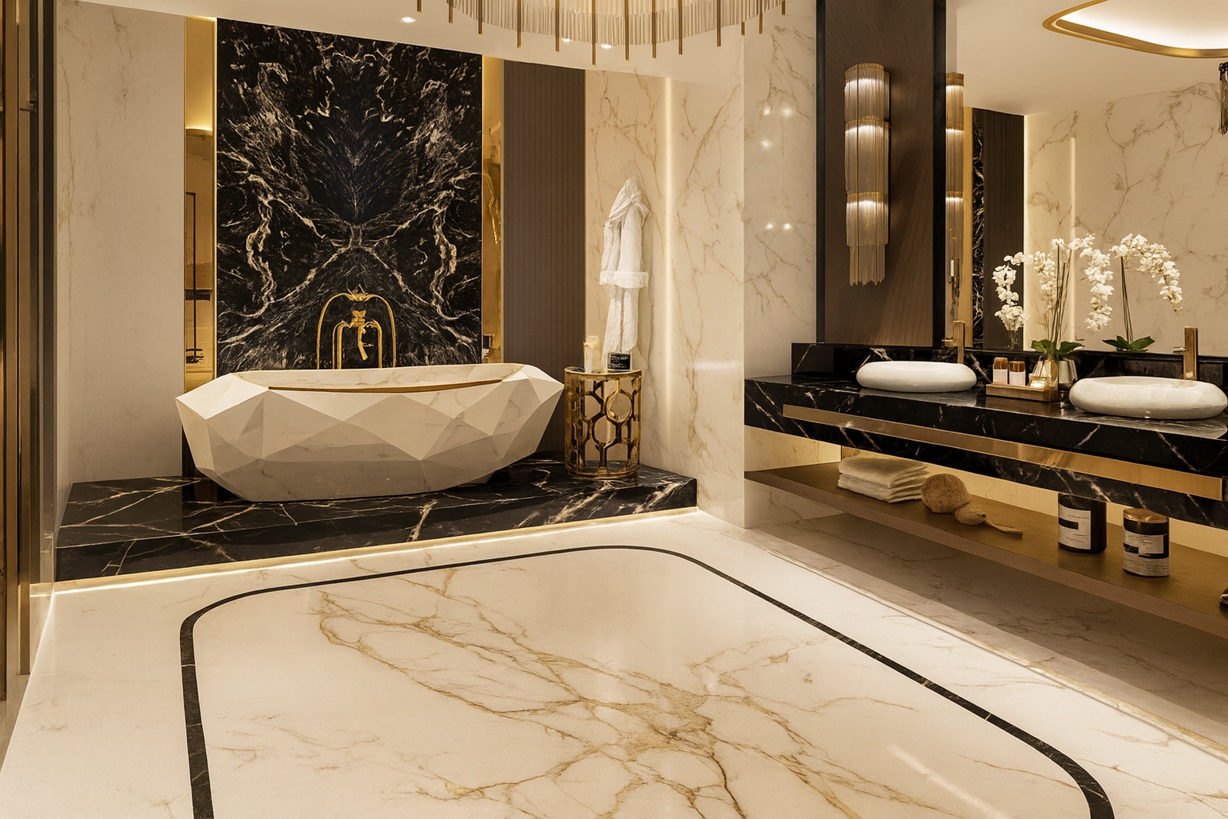
No responses yet